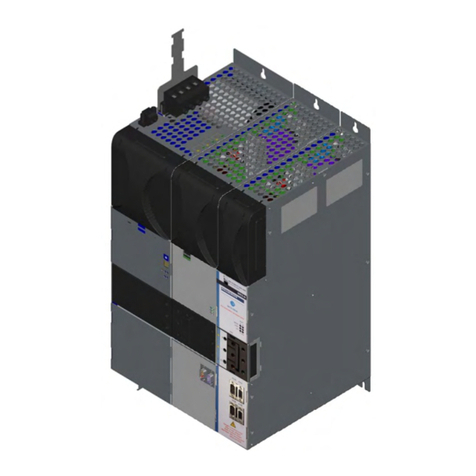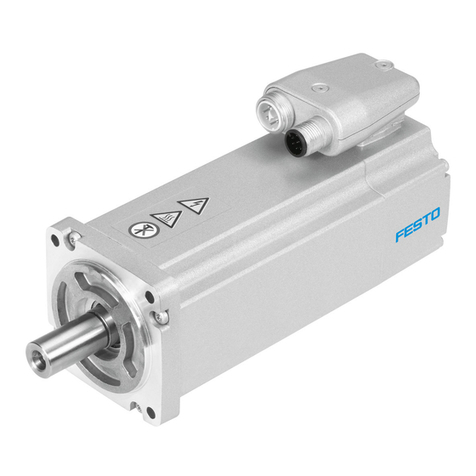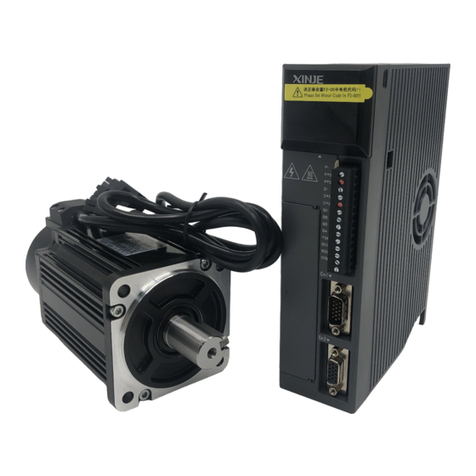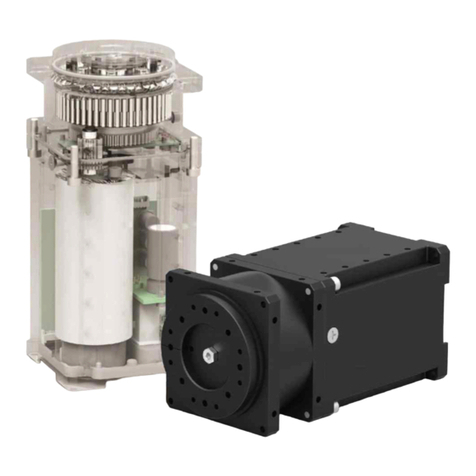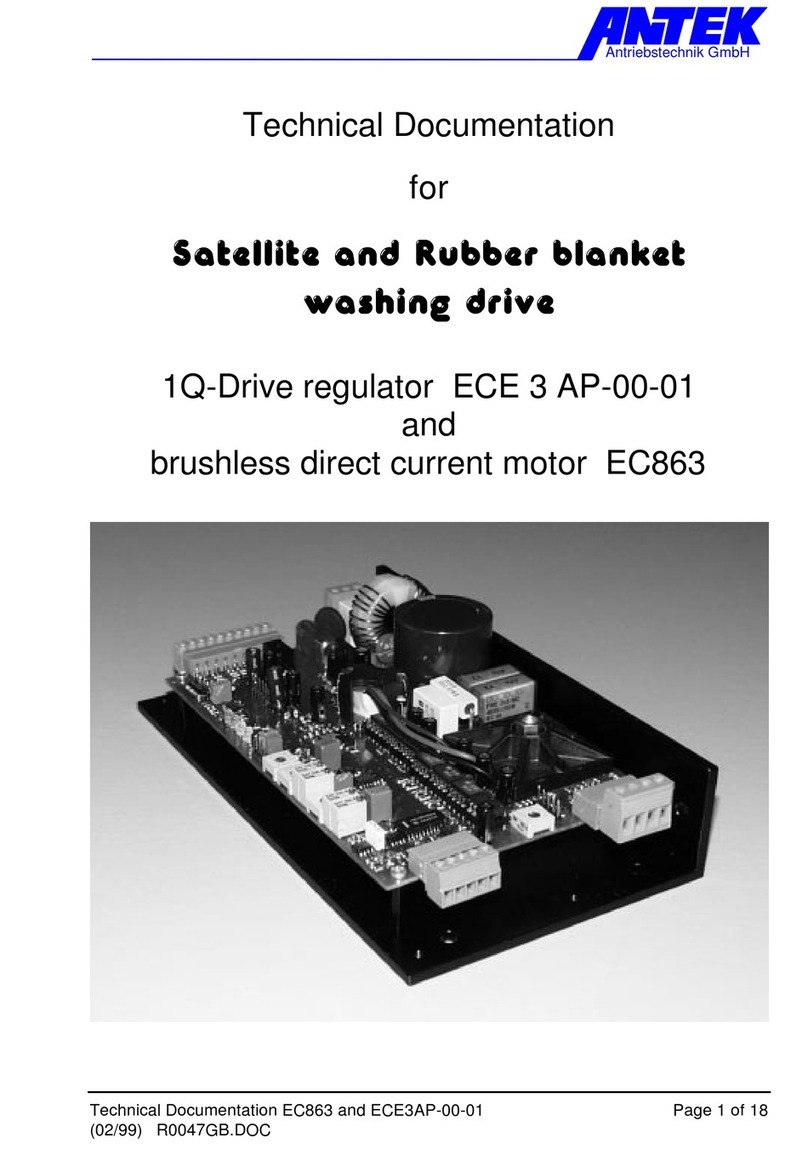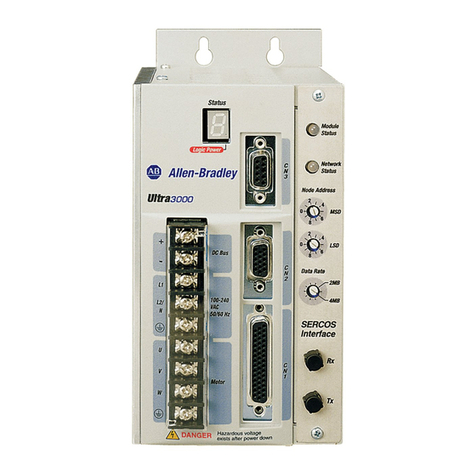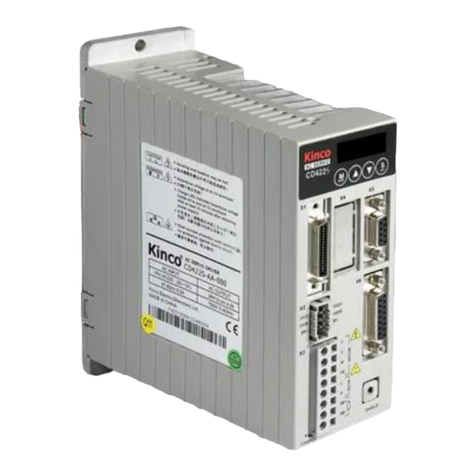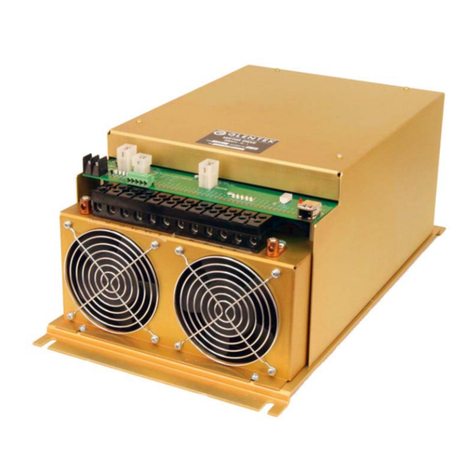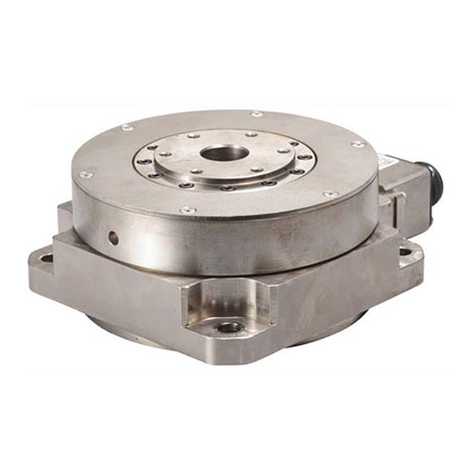Harmonic Drive LAH Series User manual

Precision Compact Linear Actuator
LAH Series (DC servo motor drive)
Operating Manual
LAH-46-1002-F
LAH-46-3002-F
● Thank you for purchasing our LAH series Precision Linear
Actuator.
● Incorrect handling or use of this product may result in
unexpected accidents or a shorter product life. Read this
document carefully and use the product correctly so that
product can be used safely for many years.
● Product specifications are subject to change without notice for
improvement purposes.
● Keep this manual in a convenient location and refer to it
whenever necessary in operating or maintaining the product.
● The end user of the product should have a copy of this manual.
ISO14001
ISO9001

LAH series, HS series
SERVO SYSTEM SAFETY GUIDE
WARNING:
Indicates a potentially hazardous
situation, which, if n
ot avoided,
could result in death or serious
personal injury.
CAUTION:
Indicates a potentially hazardous
situation, which, if not avoided,
may result in minor or moderate
personal injury and/or damage to
the equipment.
Limitation of applications:
the equipment listed in this document may not be used for the applications
listed below:
* Space equipment * Aircraft, aeronautic equipment * Nuclear equipment * Household apparatus
* Vacuum equipment * Automobile, automotive parts * Amusement equipment, sport equipment, game machines
* Machines or devices acting directly on the human body * Instruments or devices to transport or carry people
* Apparatus or devices used in special environments
Please consult with us if the above list includes your intended application for the products.
* If this product is utilized in any facility in which human life is at stake or that may incur material losses, install safety devices so that accidents will not occur even when the output control is
disabled due to damage.
ITEMS YOU SHOULD NOTE WHEN USING THE ACTUATOR
NOTICES ON DESIGN DURING DESIGN, ENSURE THAT YOU READ THE MANUAL
Do not put your hand or other objects in the operation range of the output rod (output shaft) of the linear actuator.
●Large driving force is output from the output rod. Putting your hand or other objects in the operation range may result in injury.
●LAH Series: Max. driving force 390 N (40 kgf)
CAUTION
Always use drivers under followings conditions:
●
The actuator is designed to be used indoors. Observe the following conditions:
*Ambient temperature: 0 to 40°C
*Ambient humidity: 20 to 80%RH (no condensation)
*Vibration: 24.5 m/s2or less
*No contamination by water, oil
*No corrosive or explosive gas
CAUTION
Install the actuator with specified precision.
●When installing the actuator, follow the manual and ensure that the
actuator shaft is aligned with the center of the paired unit.
●Secure the output rod (output shaft) of the actuator to the paired unit
correctly according to the manual.
●Improper alignment may cause vibration or damage to the output rod.
OPERATIONAL PRECAUTIONS DURING OPERATION, ENSURE THAT YOU READ THE MANUAL
CAUTION
Do not use an output rod stopper.
●It may cause damage to the actuator driving system, resulting in failure or
shorter service life.
CAUTION
Do not operate the actuator with wet hands.
●Electric shock may result.
Do not touch the main unit during operation.
●The output rod generates high driving force. Faulty wiring may cause the
operation to become uncontrollable.
●The surface of the actuator may become very hot during operation.
The output rod does not have a self-holding function.
●It cannot hold the load in case of an alarm stop or power shutdown.
Provide an external function to avoid danger.
CAUTION
CAUTION
CAUTION
Do not exceed the max. driving force when using the
actuator.
●Using the actuator with a driving force exceeding the max. value may lower
the accuracy or cause failure.
LAH Series: Max. driving force 390N (40 kgf)
CAUTION
Never connect cables directly to a power supply socket.
●Actuators must be operated using the proper driver.
●Do not directly apply a commercial power supply. Failure to observe this
caution may lead to fire or damage to the actuator.
Do not apply impacts and shocks.
●Because it is directly connected to the encoder, do not strike the actuator.
●Damage to the encoder may cause uncontrolled operation of the actuator.
Avoid handling of actuators by cables.
●Rough handling of cables may damage connectors, leading to
uncontrolled operation of the actuator.
CAUTION
CAUTION
Do not attempt to repair, disassemble, or alter the
actuator.
●Electric shock, injury, or fire may result. Also, the initial performance may not
be reproduced.
CAUTION
WARNING

ITEMS YOU SHOULD NOTE WHEN USING THE DRIVER
NOTICES ON DESIGN DURING DESIGN, ENSURE THAT YOU READ THE MANUAL
CAUTION
In case of power failure, turn OFF the power for the
control unit and drivers.
●
Failure to do so may cause injury or damage to equipment due to sudden
restart.
CAUTION
Do not touch the driver with wet hands.
●Electric shock may result.
DISPOSAL OF AN ACTUATOR, A DRIVER AND/OR THEIR PARTS
CAUTION
The actuator and driver must be disposed of as industrial waste.
●When disposing of the actuator or driver, disassemble it as much as possible, separate parts according to the material de
scription (if indicated), and dispose of them as industrial
waste.
CAUTION
NOTICES ON DESIGN DURING DESIGN, ENSURE THAT YOU READ THE MANUAL
Always use them under followings conditions:
●
The control unit is designed for indoor use. Be sure to observe the following
conditions.
*Mount in a vertical position keeping sufficient distance to other devices.
*0 to 50℃, 95% RH or below (No condensation)
*No vibration or physical shock
*No contamination by water, oil
*No dust, dirt, corrosive, or explosive gas
CAUTION
Use sufficient noise suppressing means and safe
grounding.
●Any noise generated on a signal wire will cause vibration or improper
motion. Be sure to observe the following conditions.
*Keep signal and power leads separated.
*Keep leads as short as possible.
*Ground actuator and driver at one single point, minimum ground
resistance class: D (less than 100 ohms)
*Do not use a power line filter in the motor circuit.
WARNING
Never change wiring while power is active.
●
Make sure of power non-active before servicing the products. Failure to
observe this caution may result in electric shock or personal injury.
WARNING
Do not touch terminals or inspect products at least 5
minutes after turning OFF power.
●Even after the power supply is turned OFF, electric charge remains in the
driver. In order to prevent electric shock, perform inspections 5 minutes or
more after the power supply is turned OFF.
●When installing, make sure that the inner electronic components are hard
to reach.
CAUTION
Do not make a voltage resistance test.
●
Failure to observe this caution may result in damage of the control unit.
●
Please consult our sales office, if you intent to use a voltage resistance test.
CAUTION
Do not operate the driver by switching the power
ON/OFF.
●Frequent power ON/OFF operations may cause deterioration of circuit
elements inside the driver.
●Use command signals to start/stop the actuator.
CAUTION
Do not attempt to repair, disassemble, or alter the
driver.
●Electric shock, injury, or fire may result. Also, the initial performance may not
be reproduced.

LAH Series Manual
Contents
I Technical Information
1.Features and configuration of linear actuator
1-1 Features ······························································· 1
1-2 Configuration ··························································1
2. Specifications
2-1 Actuator specifications ················································· 2
2-2 Encoder specifications ·················································· 3
3. External drawing······························································· 5
4. Accuracy ······································································· 5
5. Performance evaluation system and evaluation method
5-1 Performance evaluation system ···········································6
5-2 Performance evaluation method ···········································7
6. Mechanical characteristics
6-1 Permissible loads ······················································9
6-2 Axial rigidity of output rod ··········································· 9
6-3 Life ··································································· 9
II Operation Manual
1. Inspection during unpacking ··············································· 10
2. Notices on handling ························································ 10
3. Design and operational precautions
3-1 Operating environment ···················································10
3-2 Mounting direction of linear actuator ··································· 11
3-3 Mounting method of linear actuator ······································11
3-4 Load conditions and moving toward pulling direction ·····················11
3-5 Hardness of contact surface on workpiece ································ 12
3-6 Operational precautions ················································· 12
3-7 Overall limit stroke ····················································13
3-8 Limit switch ····························································14
3-9 Output rod continuous fine operation ····································14
4. Cables
4-1 Motor cables and output rod movement directions ·························· 15
4-2 Encoder cable colors ···················································15
4-3 Handling cables ························································ 15
4-4 Extension cable for motor ···············································15
4-5 Extension cable for encoder ·············································15

LAH Series Manual
5. Applicable driver
5-1 Driver specifications ··················································· 16
5-2 External drawing ························································17
5-3 Connection example ······················································ 18
6. Trial run ······································································19
7. Storage instructions
7-1 Storage area ····························································19
7-2 Rust prevention ························································· 19
7-3 Storage posture ························································· 19

LAH Series Manual
- 1 -
I Technical Information
1. Features and configuration of linear actuator
1-1 Features
The LAH series linear actuator (DC servo motor drive type) delivers high resolution and high driving force by
combining a precision ball screw, HarmonicDrive®and DC servo motor.
With a dedicated control unit, the actuator offers remarkable following accuracy and the smoothest motion from
extremely low speeds to high speeds in response to input commands.
The LAH series linear actuator (DC servo motor drive type) offers the following features:
◆Linear positioning in units of micron and sub-micron
◆High positioning accuracy and repeatability
◆Compact size with high driving force
◆Semi-closed loop control method
◆Load can be applied in both pushing and pulling directions
◆Excellent durability
◆Easy to use configuration in combination with a dedicated control unit
1-2 Configuration
Models and symbols
The LAH series linear actuator delivers smooth and accurate linear motions with a high-performance DC servo
motor, speed reducer HarmonicDrive®for precision control, and precision ball screw.
Fig.1
LAH-46-10 02-F-L
LAH series
Actuator external dimension: φ46mm
Stroke 10: 10mm, 30: 30mm
Rated driving force: 196 N (20 kgf)
Mounting shape: Flange
L: Line driver specification
Omitted: Open collector specification
PB: Shaft provided on non-load side

LAH Series Manual
- 2 -
2. Specifications
2-1 Actuator specifications
Table 1
Model
Item
LAH-46-1002-F
LAH-46-3002-F
Resolution 0.069μm
Stroke *1
10
㎜
30
㎜
Rated feed speed
2 mm/s
Max. feed speed
3.7 mm/s
Rated driving force *2
200 N
20
㎏
f
Max. driving force *2
390 N
40 kgf
Repetitive positioning
accuracy *3
±0.5μm or less/1mm stroke
Positioning accuracy *3
4μm or less/0.2mm stroke
Full stroke *3
positioning accuracy
7μm or less
10μm or less
Lost motion *3
5μm or less/1mm stroke
Load condition
Pressure of 50 N or more is applied on the shaft end to secure accuracy
Drive motor
DC servo motor MDB02-IC22
Rated voltage 12V
Rated current 0.5 A
Encoder
Output circuit Open collector or line driver
Resolution 360 pulses/revolution
Output signal Open collector: A,B,Z
Line driver: A, A, B, B, Z, Z
Power supply DC+5V ± 5%, 170 mA Max.
* When combined with servo driver HS-360, the line collector type encoder is to be
used.
Combined driver
DC servo driver HS‐360-1A
Power supply AC100V ± 10% 50/60Hz
Control method incremental pulse command input
Maximum input frequency 100 kp/s
Only the line collector type encoders are supported.
(Open collector type encoders cannot be connected. )
End limit switch
Panasonic FU switch AV4024 incorporated
Mounting direction
All directions (When mounting vertically, pay attention to the retaining force.)
Mass
810 g
850 g
Using conditions
Current can be transmitted continuously
Ambient temperature
10 to 25℃
Lubrication
Grease
*1: Detecting devices are incorporated in both stroke ends, but no mechanical stoppers are built in. Even with no-load, do
not exceed the pushing and pulling limits.
Exceeding the limits may cause failure, performance deterioration, or shorter service life.
*2: Because the end of the actuator push rod has a spherical terminal, use it in the pushing direction.
To move a workpiece toward the pulling direction, utilize the air cylinder force or spring recovery force within the driving
force range of 10 N to max.
*3: In compliance with JIS B6201. With the following conditions: Measurement temperature: 20℃± 1℃, Load: driving force
of 49 N to max.
*4: Using the actuator for continuous fine operations can cause local abrasion due to insufficient lubrication. Be sure to refer
to the manual before use.

LAH Series Manual
- 3 -
2-2 Encoder specifications
Table 2
Type Incremental
Output circuit Open collector Line driver
Resolution 360 pulses/revolution
Output signals 3 channels (A.B.Z)
Output waveform Square wave
Input voltage DC5V ± 5%
Current consumption 60 mA max. 170 mA max.
Output saturation voltage V0L = 0.5V max.
Output current IOL = 20 mA max.
Output supply voltage Vcc = +5 to +15V -
Max. output current DC35V max. -
Signal rise time 1μs max. (RL = 1kΩ) 0.1μs max. (RL = 1kΩ)
Signal fall time 1μs max. (RL = 1kΩ) 0.1μs max. (RL = 1kΩ)
Max. response frequency 100 kHz
Light source LED
◆Encoder output waveform
Fig.2
‐
‐
◆Encoder output
Fig.3
Encoder cable colors

LAH Series Manual
- 4 -
Table 3
Color
Open collector
Line driver
Brown Signal A Signal A
Blue ―Signal A
Red Signal B Signal B
Green ―Signal B
Yellow Signal Z Signal Z
Orange ―Signal Z
White Power supply Power supply
Black Ground (COM) Ground (COM)
Shielded Floating Floating

LAH Series Manual
- 5 -
3. External drawing
Model No. A B C D Mass
LAH-46-1002-F 10 69 169 185 0.81 kg
LAH-46-3002-F 30 88 188 204 0.85 kg
4. Accuracy
Table 4
Item Accuracy Load
Repetitive positioning accuracy ±0.5μm or less/1mm stroke 185
Fine stroke positioning accuracy
4μm or less/0.2mm stroke
49-196 N (5-20 kgf)
Full stroke
positioning
accuracy
LAH-46-1002-F 7μm or less/10mm stroke
LAH-46-3002-F 10μm or less/30mm stroke
Lost motion
5μm or less/1mm stroke
(Measurement temperature: 20 ± 1℃)

LAH Series Manual
- 6 -
5. Performance evaluation system and evaluation method
Performance evaluations for LAH series linear actuators are conducted using an evaluation system we developed on
our own in accordance with JIS B6201. Through this system, optimized and necessary characteristic evaluations for high-
precision positioning actuators are conducted.
5-1 Performance evaluation system
Fig.4
Main measuring instruments
Linear gauge
CT-60M (HEIDENHAIN)
Resolution: 0.05μm
Accuracy ±1μm
Indicator VRZ-210 (HEIDENHAIN)
Control unit HS-360-1A (HDS)
Controller N-100 (Nippon Pulse Motor)
Computer PC-9801 (NEC)

LAH Series Manual
- 7 -
5-2 Tips for evaluating performance
(1) Repetitive positioning accuracy (See Fig. 5.)
a) Move the output rod in the pushing direction to the stroke center position.
b) From that position, feed 1mm in the pushing direction. Mark that point as A1.
c) From point A1, feed 1mm in the pulling direction. Measure that point and mark it as P1.
d) Again, from point P1, feed 1mm in the pushing direction and mark that point as A2. From A2, move 1mm back in
the pulling direction, measure that point and mark it as P2.
e) Repeat this operation 7 times. Take one-half the value of the max. difference of the values P1 through P7 and
prepend (±) to the calculated value to obtain the repetitive positioning accuracy.
Fig.5
(2) Full stroke positioning accuracy (See Fig. 6.)
a) Move the output rod to the limit position on the pulling side, and then move it by 1mm from there in the pushing
direction. Mark that position as the datum position.
b) From the datum position, perform sequential positioning for the full stroke by feeding 0.2mm per step in the
pushing direction and measure each position.
c) At each position, the difference between the actual distance moved from the datum position and the distance to be
moved is considered as the erroneous difference. The greatest difference of the erroneous difference is the
positioning accuracy.
Fig.6

LAH Series Manual
- 8 -
(3) Fine stroke positioning accuracy (See Fig. 7.)
a) Move the output rod in the pushing direction to the stroke center position. Mark that position as the datum
position.
b) From the datum position, perform sequential positioning for 100 points (stroke 0.2mm) by feeding 2μm per step
in the pushing direction and measure each position.
c) At each position, the difference between the actual distance moved from the datum position and the distance to
be moved is considered as the erroneous difference. The greatest difference of the erroneous difference is the
positioning accuracy.
Fig.7
(4) Lost motion (See Fig. 8.)
a) Move the output rod in the pushing direction to the stroke center position. Mark that position as A0.
b) From A0, feed 1mm in the pushing direction. Mark that point as A1.
c) From point A1, feed 1mm in the pulling direction. Measure that point and mark it as P1.
d) From point P1, feed 1mm more in the pulling direction. Mark that point as A1'.
e) From point A1', feed 1mm in the pushing direction. Measure that point and mark it as P1'.
f) Repeat operations b) through e) 7 times. The difference between the average value of P1 through P7 and the
average value of P1' through P7' is the lost motion value.
Fig.8

LAH Series Manual
- 9 -
6. Mechanical characteristics
6-1 Permissible loads
Permissible loads for the output rod are as follows.
Fig.9
Table 5: Permissible loads
6-2 Axial rigidity of output rod
The axial rigidity of the output rod is around 13.7 N/μm (1.4 Kgf/μm).
6-3 Life
The life of LAH series linear actuator depends on the fatigue life of its ball screw. The equation of the life is as
follows:
73 10×5.23×)
Fa
1
(=LS
LS: Accumulated travel distance life (10% probability of failure) (km)
Fa: Average axial load (N)
Load Permissible value
Fa: Thrust load
(driving force) 392 N or less (40 kgf or less)
Fr: Extending load Not permitted
Tm: Rotational moment 0.49 N・m or less (5 kgf・cm
or less)

LAH Series Manual
- 10 -
II Operation Manual
Please be sure to read this operation manual before using this product. If you have any concerns or comments about this
product, please contact your dealer or our sales office.
1. Inspection during unpacking
When you receive the linear actuator, please check the following points.
◆You received the product you had ordered.
◆The product was not damaged during transport.
◆No looseness in fasteners.
◆Special order parts are included.
If you have any other concerns, please contact your dealer or our sales office.
2. Notices on handling
When handling a linear actuator, follow the general rules below.
3. Design and operational precautions
This product is a high-precision positioning linear actuator. When this product is not used properly or used under
undesirable operating conditions, performance cannot be sufficiently achieved. Also, the product life may be shortened
or other problems may occur. Please observe the following precautions.
3-1 Operating environment
Use the linear actuator under the following environmental conditions.
◆Indoors
◆Ambient temperature: +10 to +25℃
The temperature fluctuation of each operating temperature is recommended to be within ±1℃for more stable
accuracy of the linear actuator.
◆Ambient temperature: 35 to 80%RH (no condensation)
◆Vibration: 19.6 m/s2or less (2G or less )
◆No contamination by water or oil
(If there is a possibility of contamination by water or oil, cover the actuator. )
◆No corrosive, explosive gas, or dust
◆Never disassemble the linear actuator. If you disassemble the actuator or
loosen the screws, the performance is significantly decreased and the
original performance is no longer guaranteed.
◆
Do not apply any impact on the linear actuator. Doing so may result in
failure, lower accuracy, or abnormal sound.
CAUTION

LAH Series Manual
- 11 -
3-2 Mounting direction of linear actuator
There are no restrictions on the mounting direction. However, please observe the following precautions.
3-3 Mounting method of linear actuator
3-4 Load conditions and moving toward pulling direction
◆Apply 49 N (5 ㎏f) or more pre-load to secure the feeding accuracy of the linear actuator.
◆When the actuator is used in the direction for pushing the output rod, set the hardness of the workpiece section
that touches the linear actuator head to HRc55 to 65.
To move a workpiece toward the rod pulling direction, utilize the spring or air cylinder restoring force as shown in
Fig.11.
At this time, keep the load fluctuations as little as possible.
Fig.11
Use either one of the following load (driving force) directions:
・Direction to push the output rod
・Direction to pull the output rod
CAUTION
When the actuator is operated in the vertical direction with the motor servo
OFF, if a load of about 421 N (43 kgf) is applied, the output rod may move
(reverse operation). When an actuator is used with a vertical load, place a
stopper or brake system on the load side as a safety measure for power
OFF.
CAUTION

LAH Series Manual
- 12 -
◆When the actuator is used in the direction for pulling the output rod, remove the head on the end and use the
internal thread on the output rod.
Internal thread size: M6 P =0.75 (J1S fine thread)
When tightening a threaded fastener, apply tightening torque of 1.2 N・m (12 ㎏f・㎝) or less. Also, do
not let the threaded fastener go 10mm or more into the output rod.
3-5 Hardness of contact surface on workpiece
Set the hardness of the section where the workpiece touches the linear actuator output rod to HRc55 to 65.
3-6 Operational precautions
◆
Do not use an output rod stopper. Doing so may cause a decrease in performance such
as positioning accuracy and a shorter life. Also, the ball screw may be damaged,
resulting in improper motion.
◆
Never apply any load on the output rod other than a thrust load. Applying a load other
than a thrust load may cause abnormal abrasion on the ball screw, resulting in a
decrease in performance such as positioning accuracy and a shorter life.
CAUTION

LAH Series Manual
- 13 -
3-7 Overall limit stroke
Overall limit stroke is shown in Fig. 12.
Fig. 12
(Unit: mm)
Model Nominal stroke Overall limit stroke
Mechanical limit
stroke
LAH-46-1002-F 10: 0 to +10 12: -1 to +11 17.8: -3 to +14.8
LAH-46-3002-F 30: 0 to +30 32: -1 to +31 36.8: -3 to +33.8
(Unit: mm)
LS: Limit switch
Model (+) side mechanical
limit position
(-) side mechanical limit
position
(+) side LS operation
position
(-
) side LS operation
position
LAH-46-1002-F +14.8 -3 Operates between +11 to
+14.8.
Operates between -1 to
-3.
LAH-46-3002-F +33.8 -3
Operates between +31
to +33.8.
Operates between -1 to
-3.

LAH Series Manual
- 14 -
3-8 Limit switch
Linear actuators have incorporated limit switches, but the output rod is not programmed to stop automatically
when the limit switch is operated.
If the output rod hits the mechanical limit shown in Fig. 12, this may result in lower accuracy and shorter life and
in some cases, it could damage the linear actuator. To prevent damage to the actuator and peripheral devices,
connect the limit switch to the host device and program so that the enable signal on the driver connected to the
linear actuator immediately turns OFF when the limit switch is operated.
Also, do not use an output rod stopper even within the operable range. Doing so may cause a decrease in
performance of the linear actuator such as positioning accuracy and a shorter life. Also, the ball screw may be
damaged, resulting in improper motion.
◆Limit switch
Panasonic FU switch AV4024
Resistance load: 0.5 A 30 Voc
(COSφ≒1)
◆Limit switch lead wire
(+): Pushing side limit switch
(-): Pulling side limit switch
Black-COM, White-N0 (a contact point operation), Red-NC (b contact point operation)
3-9 Output rod continuous fine operation
Linear actuators have incorporated limit switches for stroke end detection to prevent
damage to the actuator and peripheral devices. When using the limit switch, connect
the limit switch to the host device and program so that the actuator stops when the
limit switch is operated.
CAUTION
Using the actuator for continuous fine operations (0.5
㎜
/stroke or less) can cause local
abrasion of the HarmonicDrive®or ball screw due to insufficient lubrication, resulting
in a shorter life of the linear actuator.
As a countermeasure, perform stroke operations of 2mm or more 2 to 3 times in 1000
strokes to promote the flow of internal lubricant.
CAUTION

LAH Series Manual
- 15 -
4. Cables
4-1 Motor cables and output rod movement directions
When (+) is connected to the white motor cable and (-) to the black cable, the output rod moves in the pushing
direction.
4-2 Encoder cable colors
Table 5
Color
Open collector
Line driver
Brown Signal A Signal A
Blue ―Signal A
Red Signal B Signal B
Green ―Signal B
Yellow Signal Z Signal Z
Orange ―Signal Z
White Power supply DC+5V Power supply DC+5V
Black Ground (COM) Ground (COM)
Shielded Floating Floating
☆The insulation resistance at the encoder section is checked sufficiently during the pre-shipment product inspection.
Please do not measure yourself.
4-3 Handling lead lines
Do not apply tension of 5 N (0.5 kgf) or more to the motor and encoder cables.
Install the lead line with slack and do not apply more tension than specified.
When the lead line curvature is required for use, set the curvature radius to 40mm or more.
4-4 Extension cable for motor
Use extension cables with the conductor cross-sectional area of 0.1 mm2or more for the motor. To avoid noise
induction to surrounding signal circuits, we recommend that you use shielded cables
4-5 Extension cable for encoder
◆Twisted shielded cable is recommended for encoder extension cable. Shielded cable can also be used when
the transmission distance is shorter than about 2 m with little noise.
◆Keep the encoder extension cable length under 10 m.
Check the following when using extension cables.
a) Check the supplied voltage at the encoder cable end if it goes out of the specified range due to the voltage
drop caused by resistance.
b) Check that a delay in signal pulse rise is not caused by the stray capacitance of the cable.
Please contact us when cable length exceeds 10 m.
◆Do not use a single cable for wiring encoder signal lines and motor power lines.
Also, when the same cable is used for the signal lines for other equipment, take measures so that the encoder
is not affected by noise from those signal lines.
◆Design the interface of the encoder signal properly so that the signal is not affected by noise.
This manual suits for next models
4
Table of contents
Other Harmonic Drive Servo Drive manuals
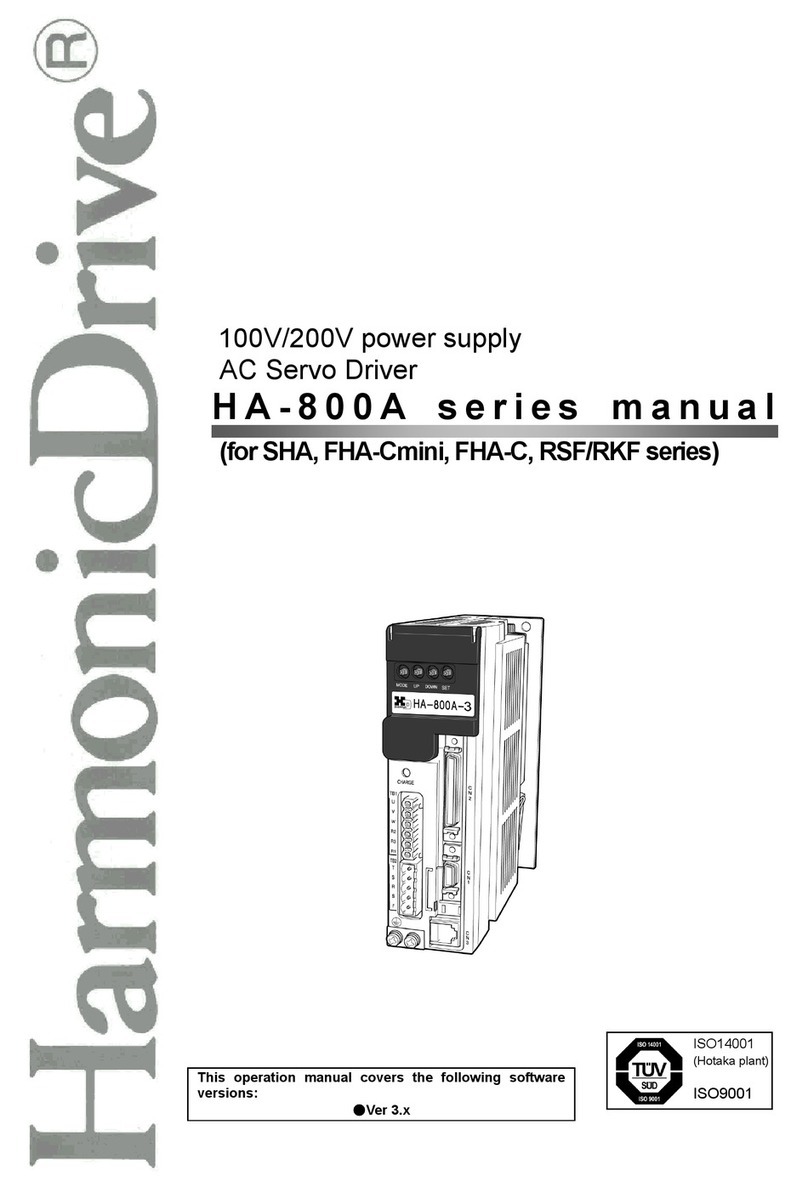
Harmonic Drive
Harmonic Drive H A - 800A User manual
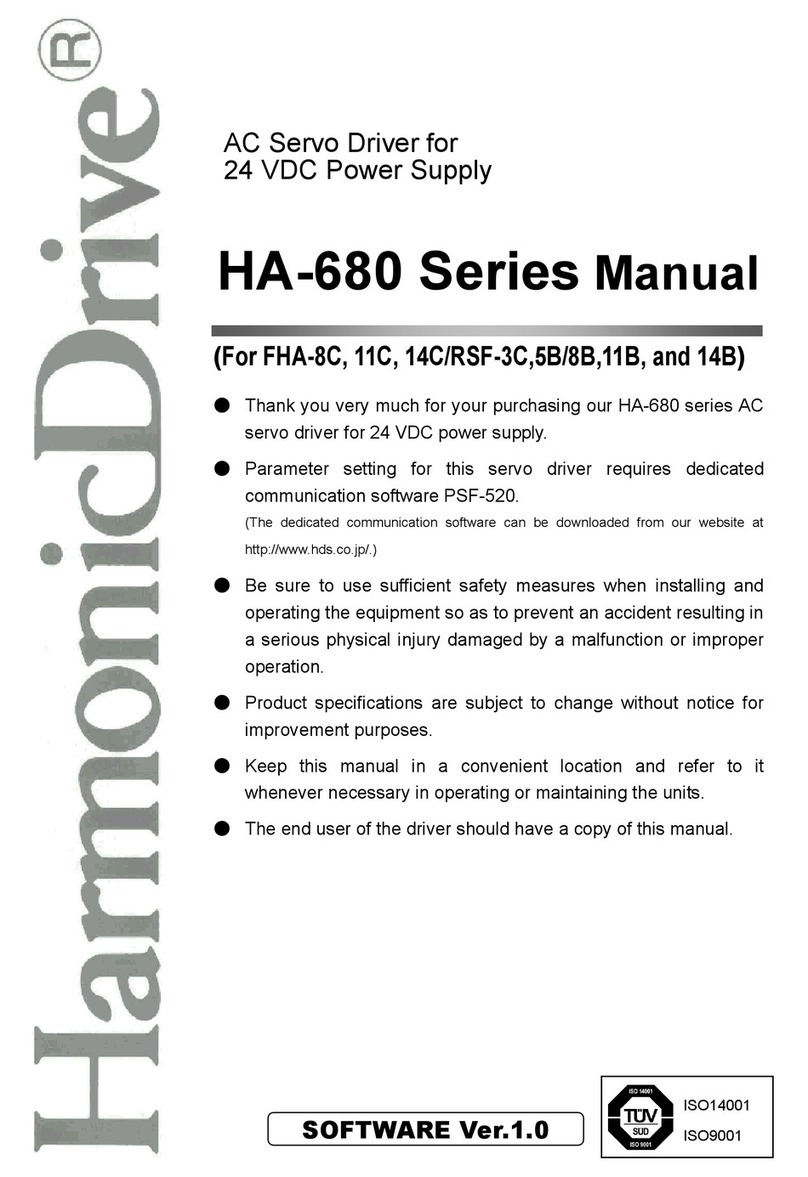
Harmonic Drive
Harmonic Drive HA-680 Series User manual

Harmonic Drive
Harmonic Drive HA-520 Series User manual

Harmonic Drive
Harmonic Drive HS-360 Series User manual
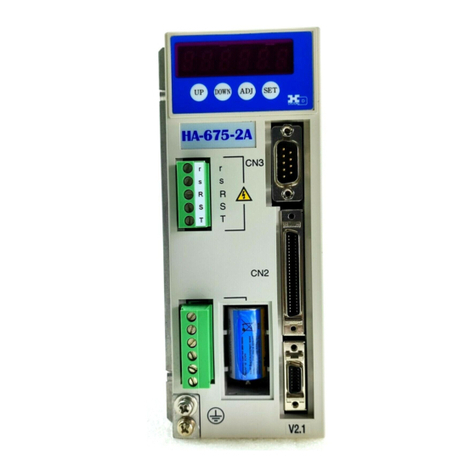
Harmonic Drive
Harmonic Drive HA-675 Series User manual
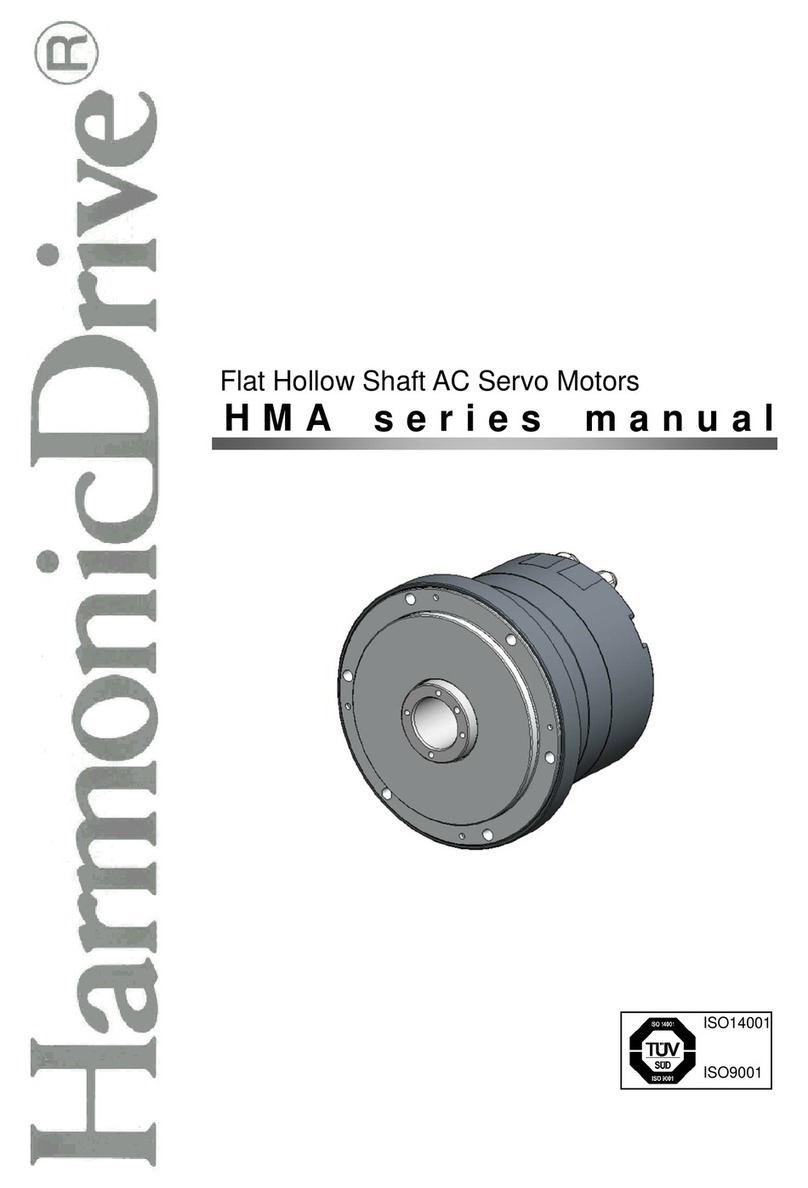
Harmonic Drive
Harmonic Drive HMA Series User manual
Popular Servo Drive manuals by other brands
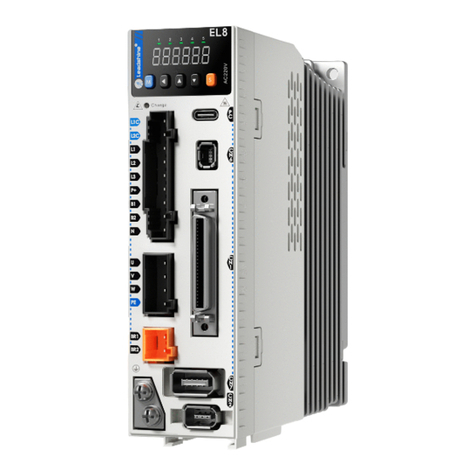
Leadshine
Leadshine EL8-RS Series user manual
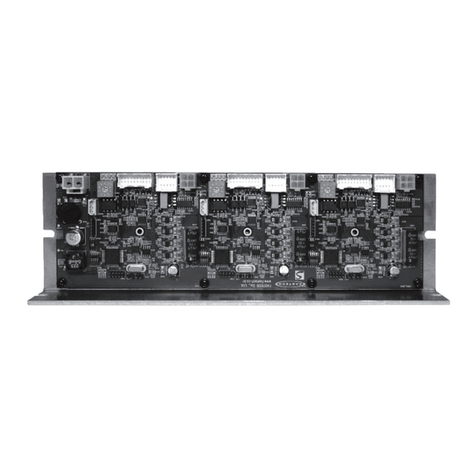
Fastech
Fastech S-SERVOII operating manual

Metronix
Metronix DIS-2 48/10 FB FS STO Mounting instructions
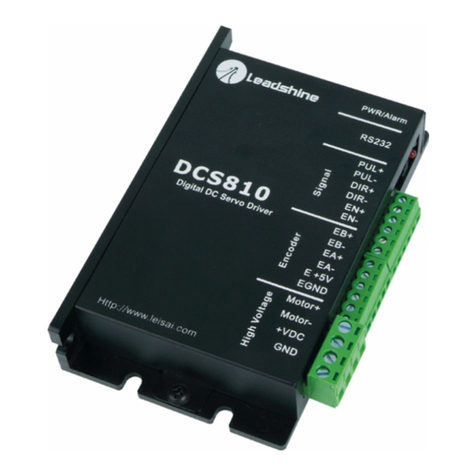
Leadshine Technology
Leadshine Technology DCS810 user manual
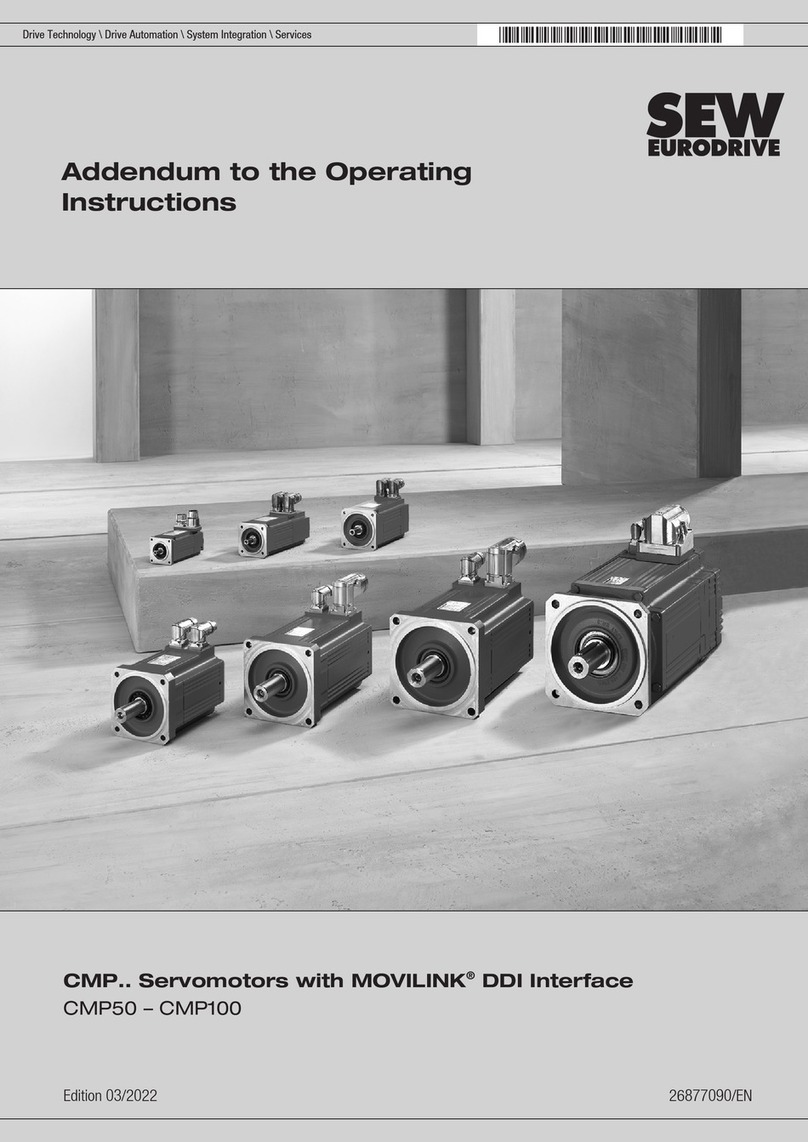
SEW-Eurodrive
SEW-Eurodrive CMP Series Addendum to the operating instructions

ABB
ABB DCS800 Hardware manual
